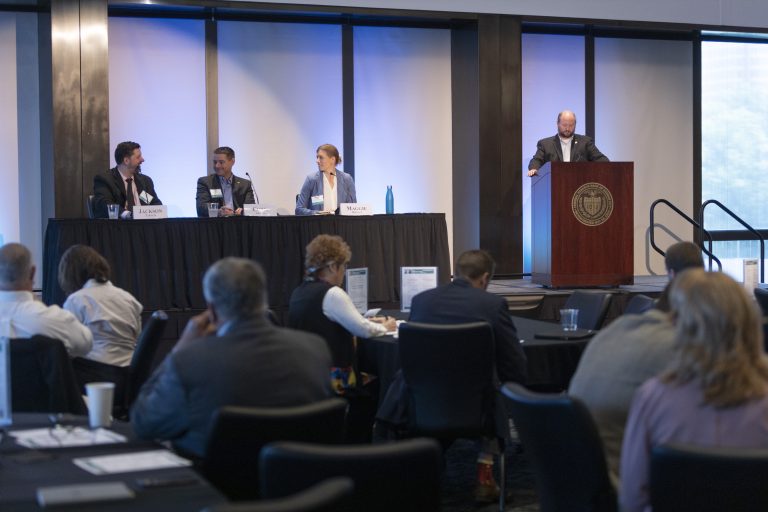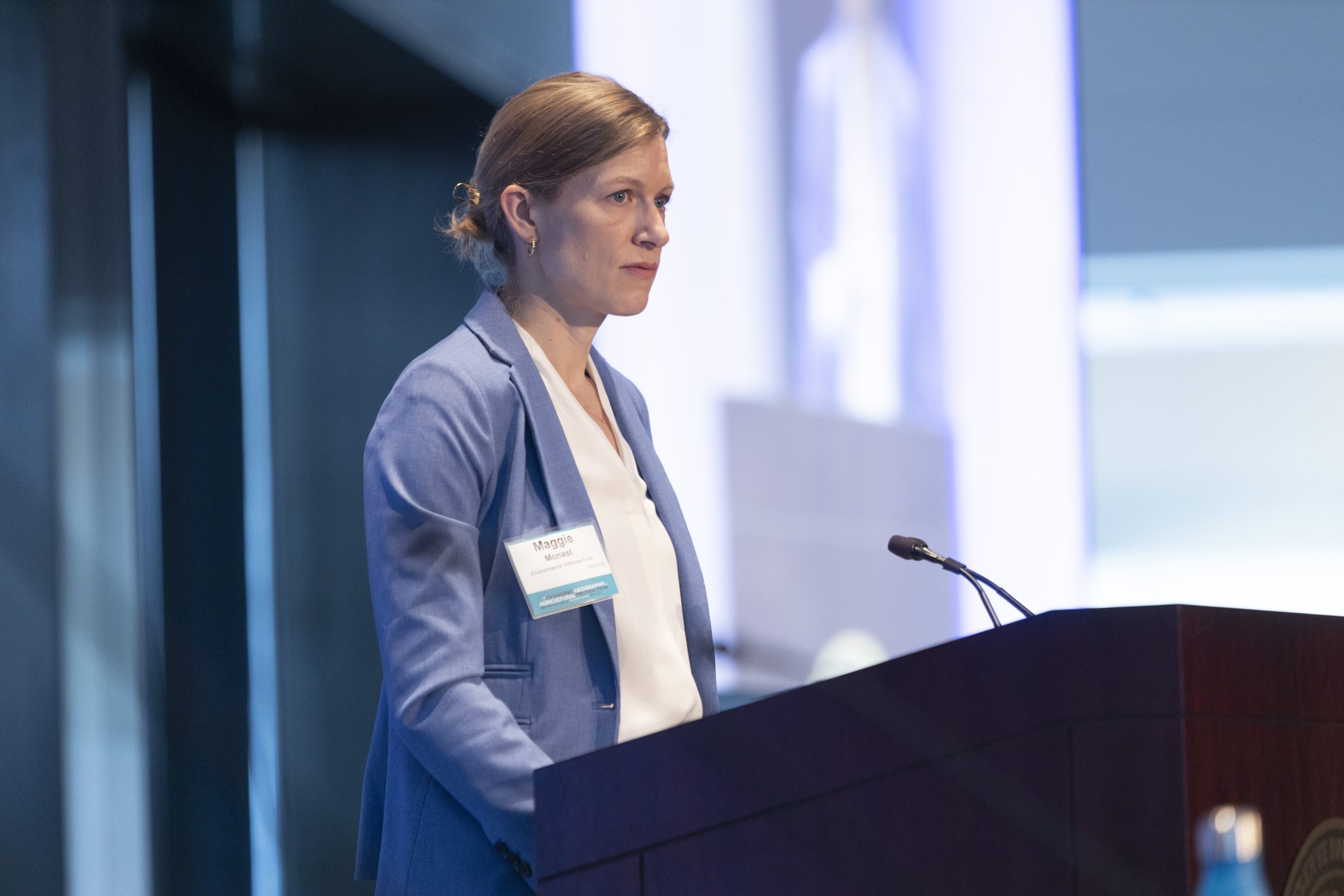Climate, agriculture, and finance: exploring connections at the Fed
Environmental Defense Fund
By Maggie Monast

Maggie Monast as a panelist at the The Federal Reserve Bank of Kansas City’s 2023 Agricultural Symposium, “The Changing Geography of Agricultural Production.”
The Federal Reserve Bank of Kansas City’s 2023 Agricultural Symposium, “The Changing Geography of Agricultural Production,” explored the factors driving changes in where and how agricultural commodities are produced, disruptions that are leading to further geographical differences, and the role of investments and farm policy in the years ahead.
I had the honor of joining as a panelist with representatives from Farmer Mac and Rabo AgriFinance, where I shared EDF’s perspective on how climate change affects agricultural production and finance. Climate impacts on agriculture, from catastrophic weather events to temperature and rainfall variability, increase risks for farmers and their financial partners. This pattern of increasing disruption directly affects food availability, prices, and ultimately, what ends up on our plates. As one of my fellow panelists noted, “The one certainty in agriculture today is volatility.”
Agriculture can build resilience and provide climate solutions
Despite these challenges, many farmers are at the forefront of developing climate solutions. EDF collaborates with farmers and other partners to understand the risks and opportunities associated with climate change and how that impacts agricultural finance and insurance. For example, recent studies indicate that farmers who adopt soil health practices are less likely to file prevent-plant crop insurance claims after heavy rainfall events.
Ultimately, there are two things the agricultural sector needs to do simultaneously: increase resilience to the ongoing impacts of climate change to maintain productivity and reduce emissions to help mitigate the extent of future change. Every part of the agricultural sector has a role to play in meeting these goals, including agricultural finance.
The role of agricultural finance
The majority of agricultural lenders are aware of the risks associated with climate change. According to a global survey conducted by EDF and Deloitte, 87% of ag lenders see climate change as a material risk to their business. However, only 24% have integrated climate change significantly into their decision-making processes. At the same time, 59% of ag lenders expect climate change-driven business opportunities, including increased demand for new financial products and services. My fellow panelists described how credit packages and the pricing of credit is changing, as ag lenders have greater access to data on risks.
I shared EDF’s new guide outlining strategies for agricultural finance institutions to address climate risks and seize opportunities. The guide emphasizes a holistic approach, including understanding regional business risks, evaluating and measuring climate risks in loan portfolios, assigning responsibility within organizations, engaging customers, and developing financial solutions that support farmers in reducing climate risks and capturing opportunities.

Maggie Monast at The Federal Reserve Bank of Kansas City’s 2023 Agricultural Symposium, “The Changing Geography of Agricultural Production.”
Unlocking opportunities for progress
Our panel discussed how farmers can increase the adoption of climate-smart practices. One panelist opined that markets create the motivation for change and that “farmers will give you 110% of what you incentivize them to do.”
To accelerate the ambition and action of agricultural finance on climate-smart agriculture, I shared three key components:
- Improved data: Agricultural lenders need better data demonstrating the connections between climate impacts, climate-smart agriculture practices, and farm profitability.
- Catalytic capital: Public or private sources of catalytic capital can provide agricultural lenders the flexibility to try out new financial solutions for farmers.
- Partnerships: Collaboration with producer organizations, major food companies, non-profit organizations, university researchers, and government agencies is essential. These challenges cannot be tackled in isolation, and partnerships with existing climate programs and incentives will foster collective progress.
By understanding the risks and opportunities associated with climate change, agricultural finance institutions can contribute to building a more resilient and sustainable agricultural sector and generate benefits for their own businesses and their farmer clients.
To view the full article, click here.



